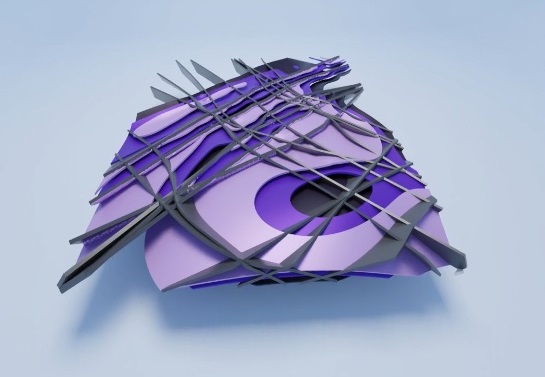Technological Challenge

High-resolution 3D seismic reflection imaging of the subsurface is a key component to control the uncertainties of the positioning of the Einstein Telescope infrastructure.
Traditionally used and developed in the energy and the raw materials sectors, there has been an increase of the use of multi-dimensional seismic reflection methods for the civil engineering sector due to the development of modern acquisition hardware and processing software allowing for a more accurate imaging of the near-surface (0 to a few hundreds of metres subsurface penetration). 3D seismic reflection surveys are today standard in the O&G industry and several technological improvements have recently been developed both on the acquisition (e.g., six-component sensors, distributed acoustic sensing) and the processing side (e.g., cloud-based full-waveform inversion and machine learning). More recently, the technology has evolved to provide solutions for the near-surface and mid-range depth (few hundreds to ca. 2000 metres).
Relation to the Einstein Telescope
Relation to the Einstein Telescope
Non-invasive and high-resolution 3D seismic reflection surveying covering the entire construction site (> 100 km2) is necessary to prepare the construction phase of the infrastructure. All subsurface data in the current feasibility study of the Einstein telescope site is either 1D (e.g., boreholes) or 2D (e.g., reconnaissance seismic surveying). A preliminary 3D surface-subsurface geomodel will integrate the existing (and currently acquired) near-surface and deeper subsurface data.
For actual underground construction activities, high-resolution 3D seismic reflection data (tens to few hundreds of metres subsurface penetration) will be needed to accurately predict variable subsurface geology along the course of tunnels and at cavern locations. High-resolution 3D seismic reflection surveying will increase lateral and vertical subsurface resolution across the study area to a few metres, which allows to-the-point planning of underground construction techniques and installations.
Innovation
Data acquisition for 3D seismic reflection
- Development of a non-invasive, high-resolution 3D seismic reflection technique supporting detailed (m-scale) 3D modelling of the subsurface.
- Adapting 3D seismic reflection technology to shallow depths where attenuation is stronger.
- Site-adapted optimized experimental design to ensure high spatial resolution at reasonable costs in terms of surveying (sensors deployment).
- Development of new exploration methods (minimally-invasive).
Software development / data integration
- Combination of different geophysical methods (borehole geophysics, geoelectrics, georadar, etc.) in one consistent geomodel based on modern joint inversion approaches and machine learning
- Integration of data acquisition, geophysical data processing and analysis to set-up a 3D model in an interdisciplinary approach (geophysics/geology integration).
- Integration of surface waves in full-waveform inversion.
- As the tunnels and caverns of the Einstein telescope (hosting technical high-quality equipment) must be dry, the 3D model imaging has to support the planning of drainage infrastructure (drainage wells).
Industrial relevance and further application fields
Methodology development of target-oriented, high-resolution 3D seismic reflection surveying solutions will be of immediate importance for other tunnel and underground cavern construction projects. The anticipated linkage between pre-construction 3D seismic reflection data acquisition, reflection processing, seismic interpretation, geological model building and on-site tunnel drilling can serve as a template for future subsurface construction projects.
The development of a specifically environmental-friendly, non-invasive 3D seismic reflection technology combined with other state-of-the-art near-surface and deep-surface geophysical methods (borehole geophysics, geoelectrics, georadar, etc.) opens a new quality of 3D subsurface imaging supporting the development of new business fields (e.g. subsurface storage development).
In general, the development of high-resolution 3D seismic reflection technologies will allow a new quality level for the preparation of building projects. This offers a wide range of applications for companies which are active in this field.
We are open to any companies’ proposals.
References
For further information and more details about this technology field, please check the following Einstein Telescope Design Reports.
E-TEST Conceptual Design Report:
Einstein Telescope Conceptual Design Report:
Site and Infrastructure: Pages 161-192
Contact to the Einstein Telescope ecosystem
Are you active in this field of technology? Do you have an innovative approach to meet the requirements for High-resolution 3D seismic reflection imaging ? Then take note of our tenders, join our challenges or simply get in contact with us. Furthermore, you can take a look at the mapping displaying the ET-relevant cempetencies in the EMR-Region. If you would like to be part of this mappink, please contact the business development managers.
Business development contacts
Peter Gier
AGIT DE – p.gier@agit.de
Matthias Grosch
NMWP.NRW DE – matthias.grosch@nmwp.de
Michel Stassart
Skywin BE – michel.stassart@skywin.be
Annick Pierrard
ULiège BE – a.pierrard@uliege.be
Maxime Corvilain
POM Limburg BE – maxime.corvilain@pomlimburg.be
René Kessen
LIOF NL – rene.kessen@liof.nl
Scientific contacts
Stefan Back
RWTH Aachen University DE – stefan.back@emr.rwth-aachen.de
Florian Wagner
RWTH Aachen University DE – florian.wagner@eonerc.rwth-aachen.de

